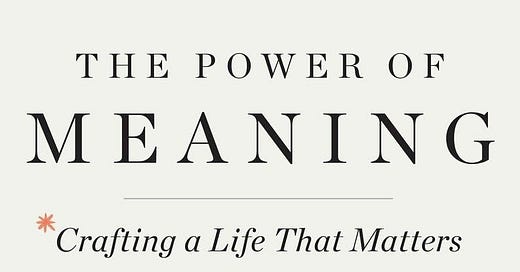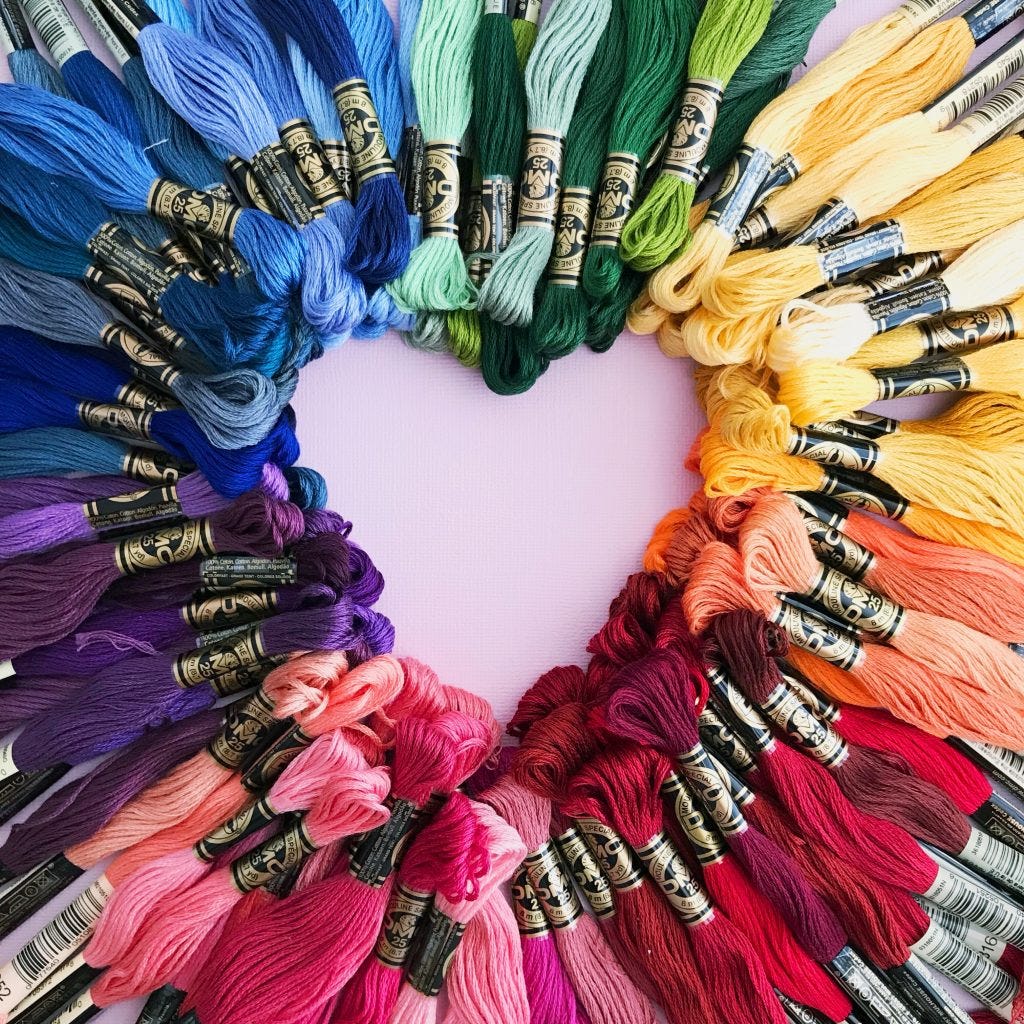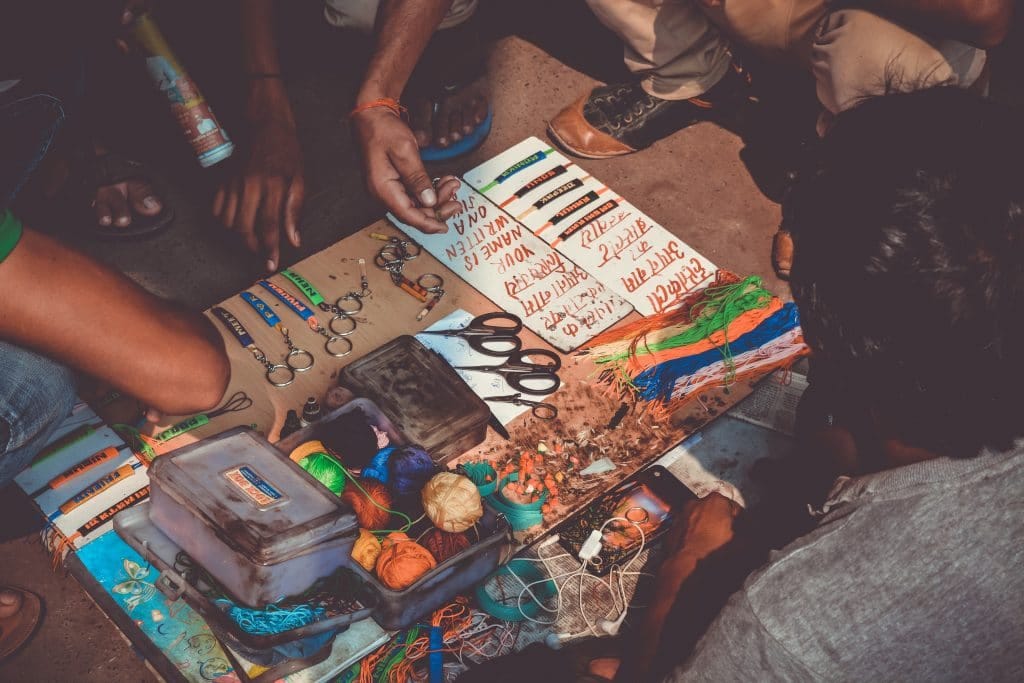Crafting Meaning: How to Find Belonging through Craft
Meaning vs. happiness, feeling good vs. doing good, and how to embrace a crafty community to increase meaning in your life
This post originally appeared in 2018 on the PsychCentral blog Crafting to Heal.
Emily Esfahani Smith has authored a compelling book titled, “The Power of Meaning: Crafting a Life that Matters.” This book isn’t literally about hands-on crafting. Instead, it is a well-researched guide to finding meaning in life. However, her research can be combined with research into how crafting heals to help us in crafting meaning for our lives.
Mental Health: Meaning vs. Happiness
There is nothing wrong with wanting to be happy. However, happiness as an end goal doesn’t actually improve mental health. In fact, striving for happiness can lead to distress. Smith shares two important points.
Feeling Good vs. Doing Good
First, she looks back at history and defines two key terms:
Hedonia: the pursuit of pleasure and avoidance of pain and mental distress
Eudaimonia: Active engagement in life and contribution to society
To put it more simply, she says that the former is about “feeling good” whereas the latter is about “being and doing good.”
Happiness isn’t a Predictor of Suicide
Smith’s second important point is that happiness (or unhappiness, for that matter) does not predict suicide. She cites a specific study by Oishi and Diener that found that there was no correlation between in-the-moment happiness and suicide rates. In contrast, meaning (or lack thereof) predicts suicide. In other words, people who aren’t able to find meaning in life are more likely to die by suicide. A person can be chronically unhappy but find meaning in life that allows them to persist.
The critical thing to understand is that meaning and happiness can coexist, but they can also be at odds with one another. She gives the example of having children. It is an act that most people agree gives intense meaning to life. In fact, people who have children are less likely than non-parents to die by suicide. And yet, having children doesn’t always make people feel happy. It is a responsibility, a difficult one, and although it comes with a lot of joy, it also comes with a lot of stress and many moments of unhappiness.
Crafting Meaning: Belonging
Smith’s book has distilled down the research and named four key things that have brought meaning to people’s lives across eras and cultures:
Belonging
Purpose
Storytelling
Transcendence
She makes a good argument for the importance of belonging for feeling that life is meaningful. For example, she looks at the well-known research done into children who grew up in orphanages where they received little touch. There was a failure to thrive; babies who don’t feel emotionally valued, cared for and loved can die even if all of their physical needs are met.
This extends into adulthood. When we don’t feel like we belong, we can’t thrive. As adults, we have to work to create a sense of belonging. We have to choose and nurture the relationships, work, and community efforts that give us that feeling of belonging.
How Crafting Offers Belonging
Hands-on crafting can be used to create and strengthen a sense of belonging. There are several ways that you can intentionally enhance belonging through crafting.
1. Join a craft community.
One of the best ways to belong to a group is to join one that enjoys the same crafts as you. Craft groups meet regularly to craft together and share skills. However, they often become so much more. The knitting and quilting circles of the past were sources of strength and community for the women who participated in them. It is no different for craft groups today.
Craft groups can be found at libraries, craft stores, schools, and through community meetups. You can put out a call through Nextdoor or Facebook and find or start a craft group of your own.
Tips for Crafty Connections
In my book Hook to Heal, I’ve shared 100 crochet exercises that help improve mental health including an entire chapter devoted to crafting to improve relationships. Here are some extra tips for activities that you can engage in together once you have a group to expand your crafty love and creativity. Some examples include:
Everyone in the group makes a different version of the same thing (crochet-along style) and celebrates the unique features of each person’s finished object.
White elephant or Secret Santa gifting using your craft-making skills. This is great for holidays and other celebrations.
Each person in the group teaches a skill to someone else in the group. This might be done one-on-one or through workshops that are taught to the whole group.
Everyone makes one part of a larger item, such as one blanket for a square or one motif for a bunting. You can make a single item and keep it in the shared space where the group meets or make one item for everyone in the group in this way.
Show-and-tell days! Host weekly, monthly or seasonal days where each person brings in some of their favorite handmade items to share stories about.
2. Enhance connections in online craft communities.
There are many online craft communities, which on their own can offer a great sense of belonging. However, it helps if you work to strengthen your connections in those communities. Here are some tips:
Ask and answer questions in the group.
Share yourself authentically, about crafting but also more about who you are.
Pick 1-2 people per month to grow a relationship with. Send chat messages, emails, maybe even a phone call.
Take it into real life. Meet up with online friends who live nearby. Attend one conference each year that’s further away.
3. Incorporate crafting into your existing circles.
Host craft events at your home and invite friends to join. There are things that work even for friends who consider themselves “not crafty.” For example, every year I host a gingerbread house-making party. I include a variety of other holiday craft options. It is a non-threatening environment and everyone’s creativity thrives. Even though it is only once a year, it adds meaning to my life.
Invite people over to collage from magazines. Have a friend over for tea and crafting. Start a book club for reading crafty books.
Alternatively, you may find that you can incorporate your craft into a non-crafty group. In the book, Smith talks about the Society for Creative Anachronism, which is a group of medieval recreationists. What they share in common is a love for medieval times, but their specific niche interests are unique. Individuals may take an interest in 13th-century stained glass techniques or 14th-century woodworking. The crafts differ but they’re linked to a sense of belonging to the bigger group.
4. Use your craft as a service.
Your craft is a skill. It is something that you can offer to others. Every time that you gift someone a handmade creation, you strengthen your connection with them. However, you can do even more to use crafting in service of your community:
Practice intentional crafting. Prayer shawls are one example; you think about the shawl’s recipient and wish them well throughout the crafting. You may include a written prayer with the gift.
Devote time to making things for the people who appreciate them. Belonging comes from mutual regard.
Donate handcrafted items to charities that do work you believe in. Churches, shelters, schools, and non-profits often accept handmade goods.
Volunteer to craft with others who might be lonely. For example, knit or crochet with an elderly person.
Teach your craft to others who want to learn. Lessons can be informal or formal, one-on-one or in a group.
If you read this far, perhaps you liked the work. The work does take work. It only continues with support, so please consider subscribing. My annual rate starts at $10 per year.













